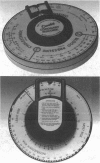Abstract
OBJECTIVE--To devise a simplified system for grading and monitoring modifiable coronary risk in primary care, to be used with an action plan. METHODS--The risk equation came from 5203 men aged 40-59 in the United Kingdom heart disease prevention project, who had 331 coronary events over five years; the population rank (reading 1-100) was obtained by scoring 10,359 participants in the Scottish heart health study. Calculation of rank was embodied in the Dundee coronary risk-disk; the formula was tested against the Whitehall study; disk and action plan were evaluated in primary care. RESULTS--The system measures modifiable coronary risk from smoking, blood pressure, and blood cholesterol concentration by a sex and age related rank running from 1 (high risk, priority action) to 100 (low risk, general advice). The formula predicted outcome acceptably in the Whitehall study and is built into a circular slide rule. Only eight (11%) of 76 general practitioners and practice nurses surveyed already used risk factor scores. After evaluation most thought they should use one and proposed to incorporate the Dundee coronary risk-disk and the associated action plan into their routines. CONCLUSION--The Dundee coronary risk-disk readout of Dundee rank, standardised on a scale of 1 to 100 by age and sex, is a simple, valid means of assessing and monitoring modifiable coronary risk. It puts single risk factors (such as cholesterol concentration) in perspective and can aid selective testing. Understood by medical staff and patients, it should improve the efficiency and effectiveness of the high risk approach to coronary prevention.
Full text
PDF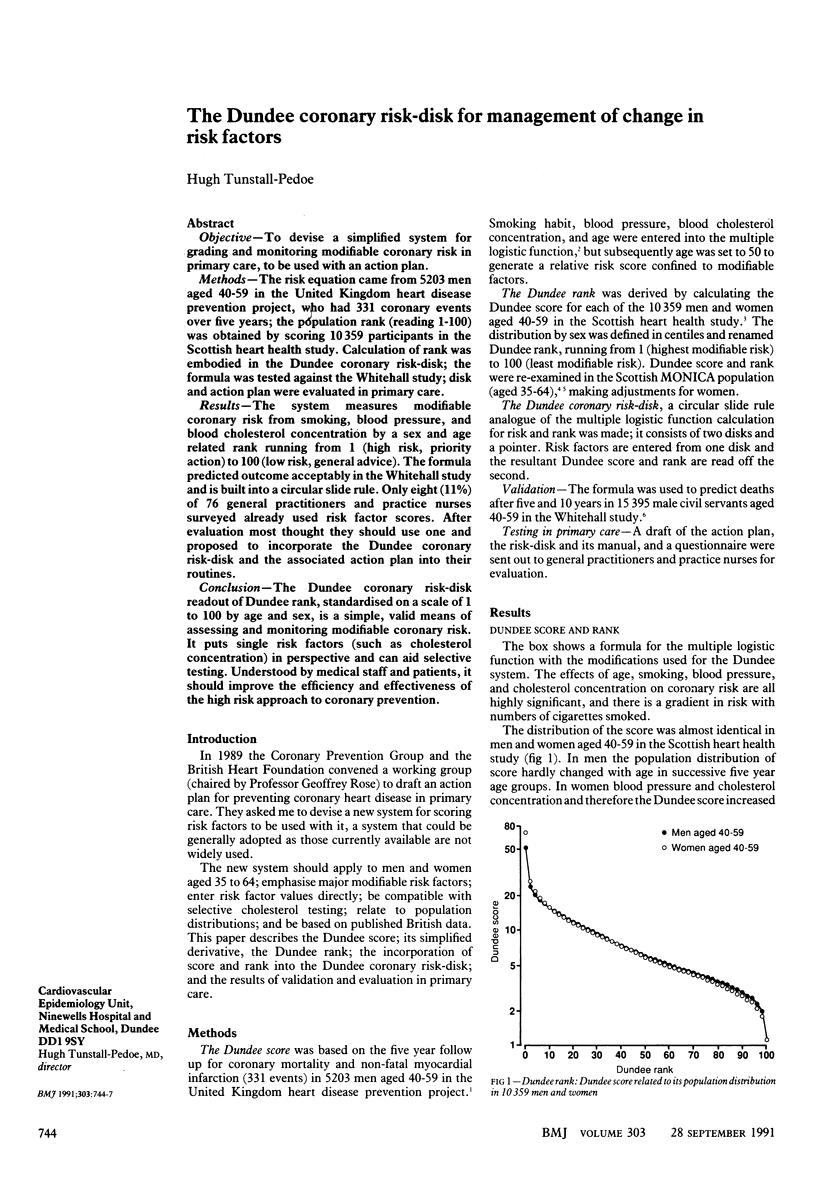
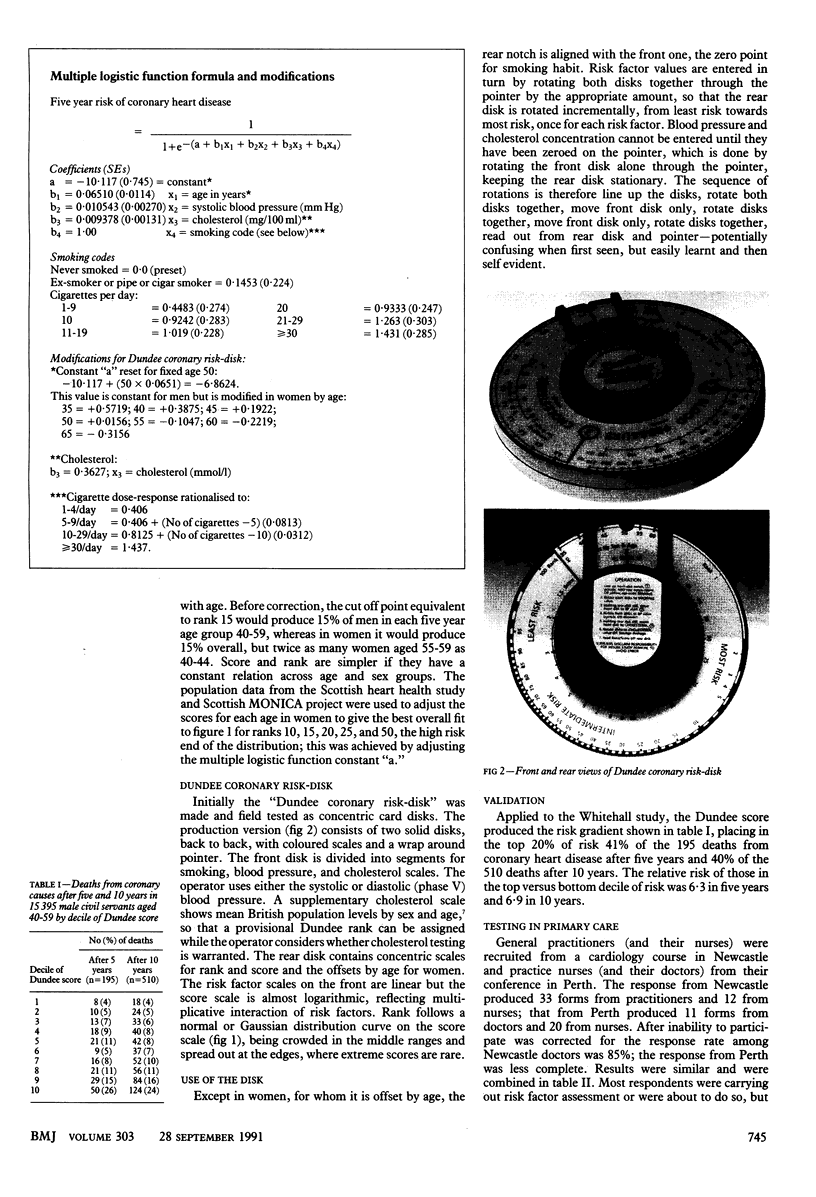
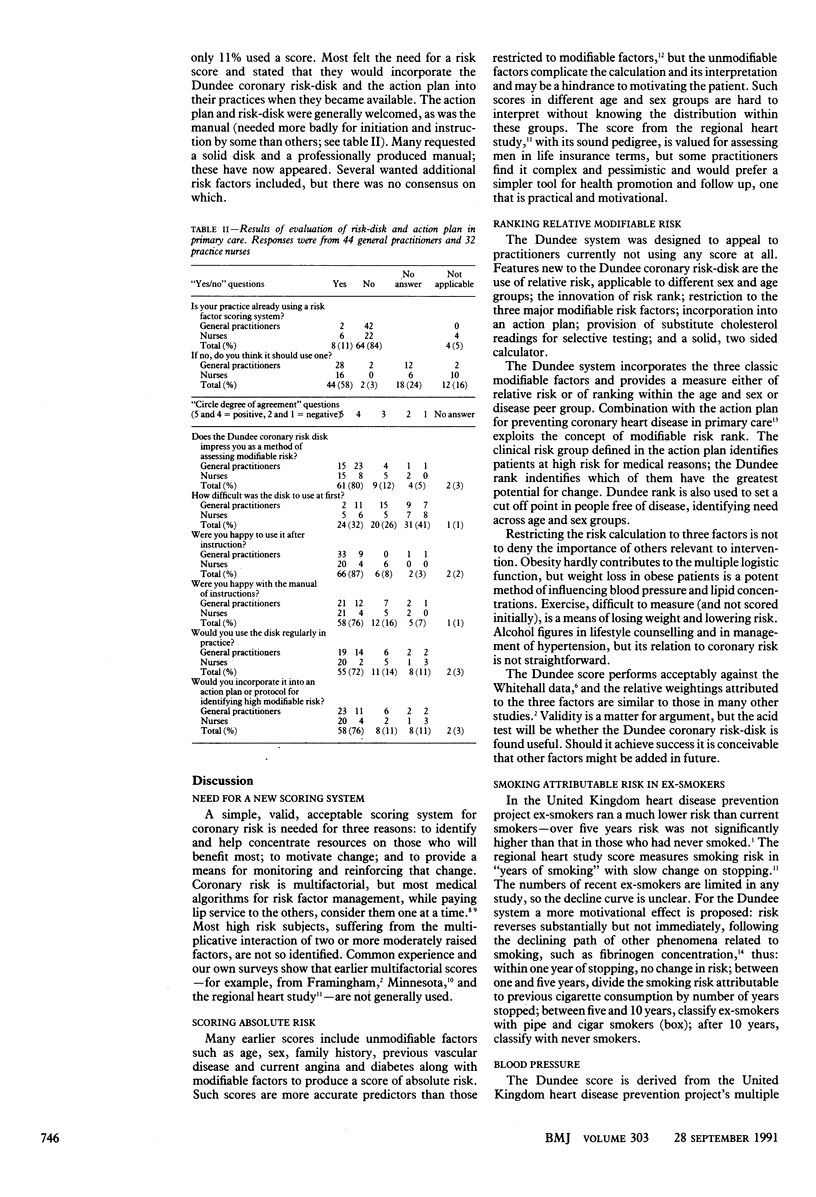
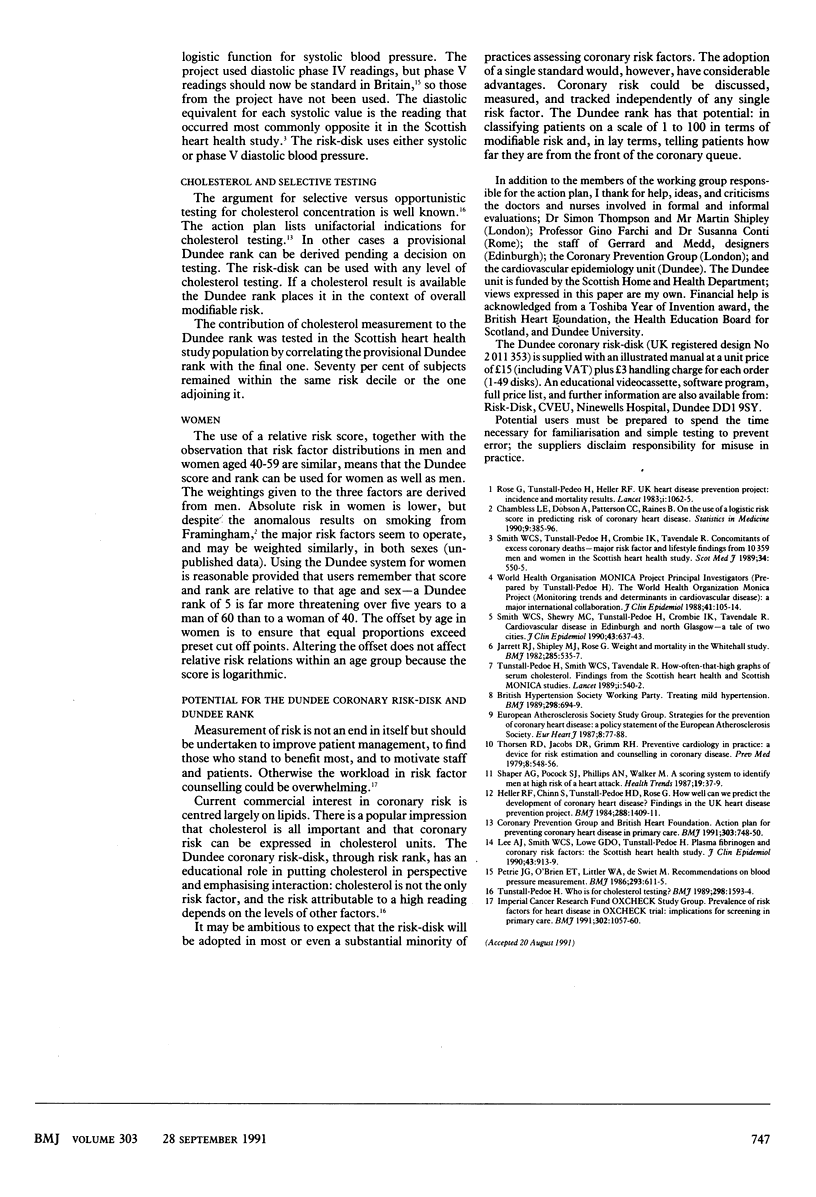
Images in this article
Selected References
These references are in PubMed. This may not be the complete list of references from this article.
- Chambless L. E., Dobson A. J., Patterson C. C., Raines B. On the use of a logistic risk score in predicting risk of coronary heart disease. Stat Med. 1990 Apr;9(4):385–396. doi: 10.1002/sim.4780090410. [DOI] [PubMed] [Google Scholar]
- Heller R. F., Chinn S., Pedoe H. D., Rose G. How well can we predict coronary heart disease? Findings in the United Kingdom Heart Disease Prevention Project. Br Med J (Clin Res Ed) 1984 May 12;288(6428):1409–1411. doi: 10.1136/bmj.288.6428.1409. [DOI] [PMC free article] [PubMed] [Google Scholar]
- Jarrett R. J., Shipley M. J., Rose G. Weight and mortality in the Whitehall Study. Br Med J (Clin Res Ed) 1982 Aug 21;285(6341):535–537. doi: 10.1136/bmj.285.6341.535. [DOI] [PMC free article] [PubMed] [Google Scholar]
- Lee A. J., Smith W. C., Lowe G. D., Tunstall-Pedoe H. Plasma fibrinogen and coronary risk factors: the Scottish Heart Health Study. J Clin Epidemiol. 1990;43(9):913–919. doi: 10.1016/0895-4356(90)90075-z. [DOI] [PubMed] [Google Scholar]
- Petrie J. C., O'Brien E. T., Littler W. A., de Swiet M. Recommendations on blood pressure measurement. Br Med J (Clin Res Ed) 1986 Sep 6;293(6547):611–615. doi: 10.1136/bmj.293.6547.611. [DOI] [PMC free article] [PubMed] [Google Scholar]
- Rose G., Tunstall-Pedoe H. D., Heller R. F. UK heart disease prevention project: incidence and mortality results. Lancet. 1983 May 14;1(8333):1062–1066. doi: 10.1016/s0140-6736(83)91907-4. [DOI] [PubMed] [Google Scholar]
- Shaper A. G., Pocock S. J., Phillips A. N., Walker M. A scoring system to identify men at high risk of a heart attack. Health Trends. 1987 May;19(2):37–39. [PubMed] [Google Scholar]
- Smith W. C., Shewry M. C., Tunstall-Pedoe H., Crombie I. K., Tavendale R. Cardiovascular disease in Edinburgh and north Glasgow--a tale of two cities. J Clin Epidemiol. 1990;43(7):637–643. doi: 10.1016/0895-4356(90)90033-l. [DOI] [PubMed] [Google Scholar]
- Smith W. C., Tunstall-Pedoe H., Crombie I. K., Tavendale R. Concomitants of excess coronary deaths--major risk factor and lifestyle findings from 10,359 men and women in the Scottish Heart Health Study. Scott Med J. 1989 Dec;34(6):550–555. doi: 10.1177/003693308903400603. [DOI] [PubMed] [Google Scholar]
- Thorsen R. D., Jacobs D. R., Jr, Grimm R. H., Jr, Keys A., Taylor H., Blackburn H. Preventive cardiology in practice: a device for risk estimation and counseling in coronary disease. Prev Med. 1979 Sep;8(5):548–556. doi: 10.1016/0091-7435(79)90330-x. [DOI] [PubMed] [Google Scholar]
- Tunstall-Pedoe H., Smith W. C., Tavendale R. How-often-that-high graphs of serum cholesterol. Findings from the Scottish Heart Health and Scottish MONICA studies. Lancet. 1989 Mar 11;1(8637):540–542. doi: 10.1016/s0140-6736(89)90077-9. [DOI] [PubMed] [Google Scholar]
- Tunstall-Pedoe H. Who is for cholesterol testing? Test selectively those who will benefit most. BMJ. 1989 Jun 17;298(6688):1593–1594. doi: 10.1136/bmj.298.6688.1593. [DOI] [PMC free article] [PubMed] [Google Scholar]



